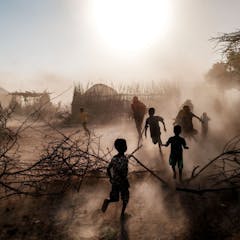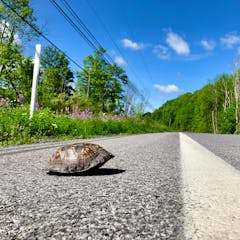
Articles on Zoonotic diseases
Displaying 1 - 20 of 99 articles

B virus is a biosafety category 4 virus. That is, the same level as Ebola and unknown new pathogens.

People often think of leprosy as a bygone disease, relevant primarily in biblical times. But in fact, it is still present in more than 120 countries, and the US is seeing an uptick in cases.

Pandemics often have animal origins, so prevention is often dominated by health and veterinary sciences. However, social sciences’ role in understanding human behaviour is also crucial to prevention.

Dogs may be a human’s best friend but there are limits – is face licking one of them?

Alaskapox was discovered in 2015 and has generally only caused mild illness – until now.

The signs that remind you to pick up after your pet are not just trying to keep public spaces clean; they’re urging you to help safeguard your community’s health.

An unexpected case of rabies found in an animal can raise concerns for a potential outbreak. Proactive vaccination of both wildlife and people can help protect everyone.

Heat, floods and droughts create conditions for pathogens and their vectors.

Labels highlighting the health and pandemic risks of meat were also effective.

Animals, including the ones that live in our homes, can carry all kinds of illnesses. Most of the time it’s not a problem, but here’s what you should do to avoid getting sick.

A newborn bison calf in Yellowstone National Park had to be euthanized after a visitor handled it in May 2023 – a recent example of how trying to help wild animals often harms them.

We studied 16 bat species in the UK to learn about the viruses they carry and understand the risk to humans.

Museum archives hold biological specimens that have been collected over years or even decades. Modern molecular analysis of these collections can reveal information about pathogens and their spread.

This whirlwind tour of social history describes how infectious diseases have shaped humanity at every stage. It suggests reducing inequality will give us our best chance of surviving future plagues.

Raw seafood dishes such as sushi, poke bowls and ceviche are increasingly popular, but can harbour fish-borne parasites. What’s the best way to protect ourselves?

A new global dataset shows there is no clear global increase of infectious disease outbreaks over time. And it can suggest which countries would most likely be affected by an outbreak.

Evidence is mounting for links to animals at the Wuhan wet market. But we’ve wasted a lot of time and energy getting here.

Avian influenza viruses have evolved to infect birds, but the current H5N1 outbreak is also infecting a wide range of mammals. This suggests that it could mutate into forms that threaten humans.

It is not the drought that causes disease outbreak, but instead the way society deals with dry conditions.

The Marburg virus, a close cousin of Ebola, currently has no approved treatments or vaccines to protect against it.

